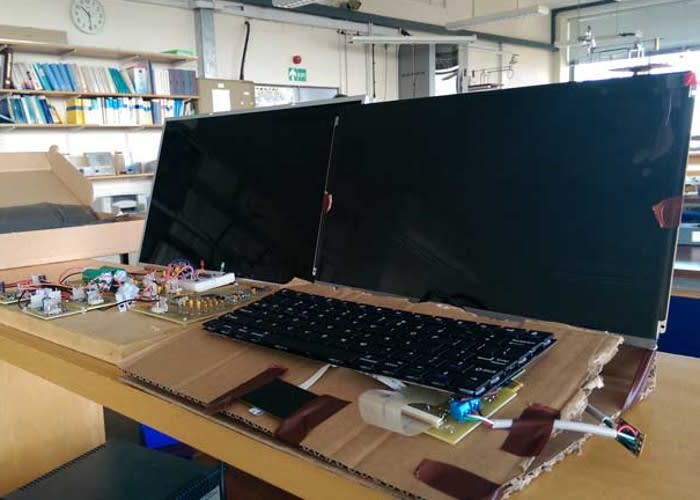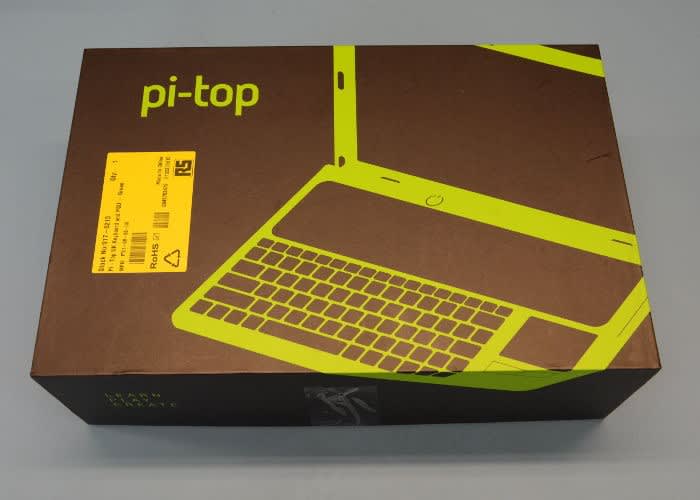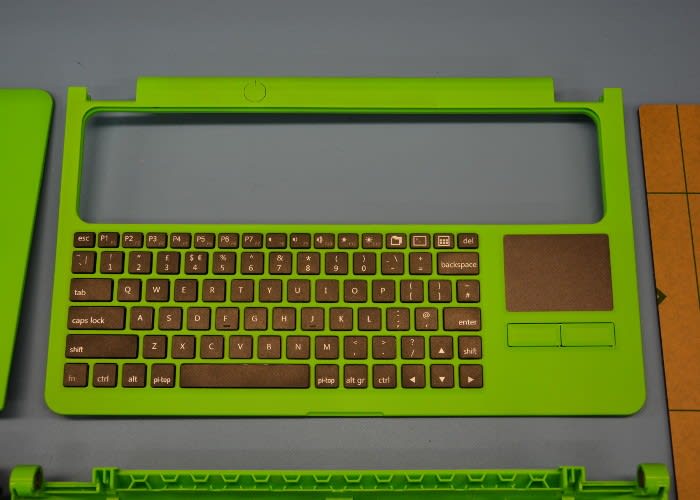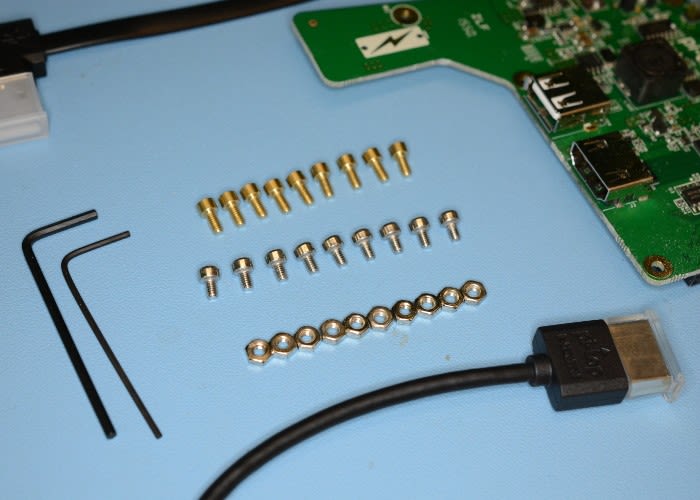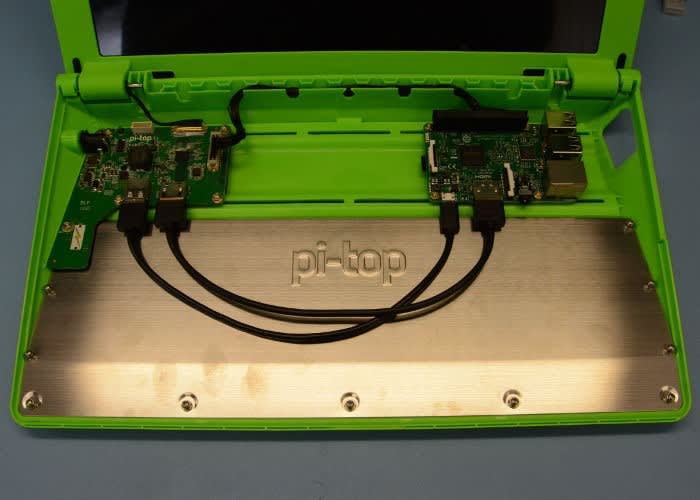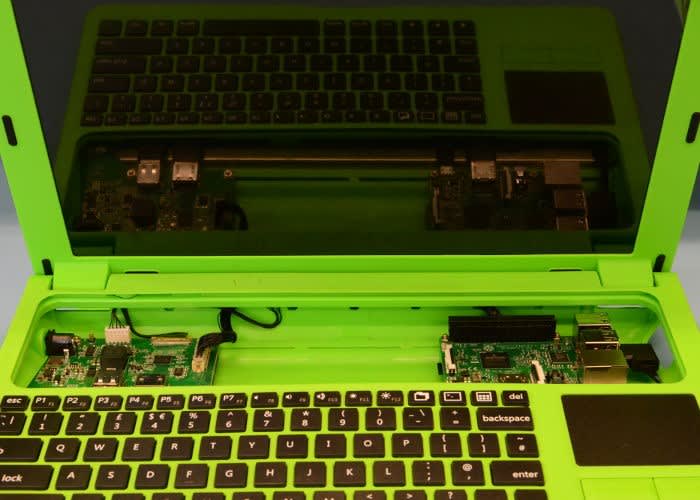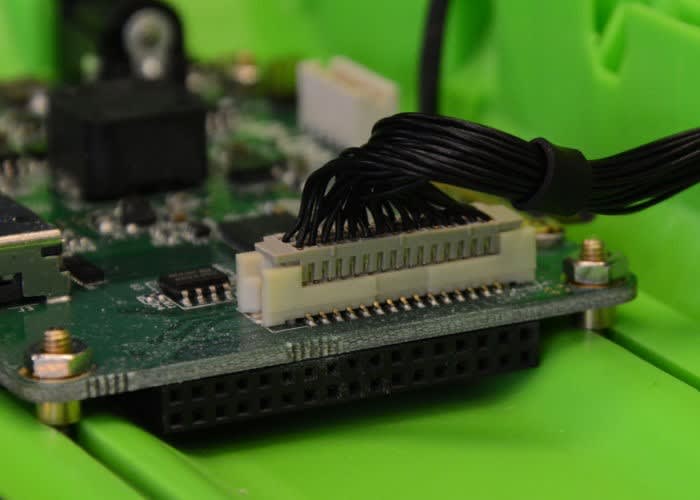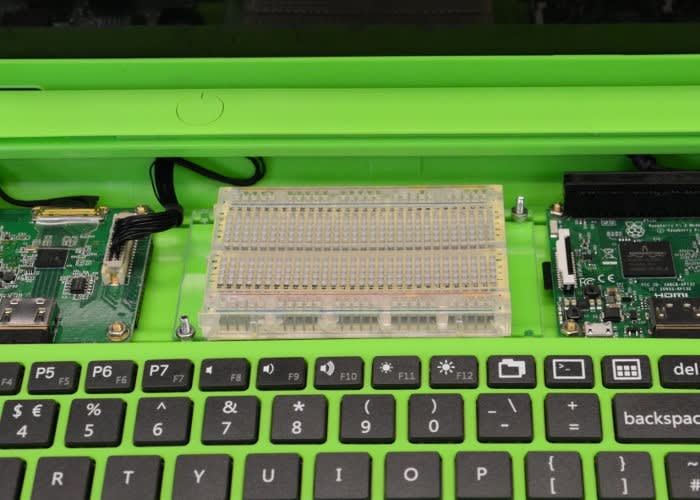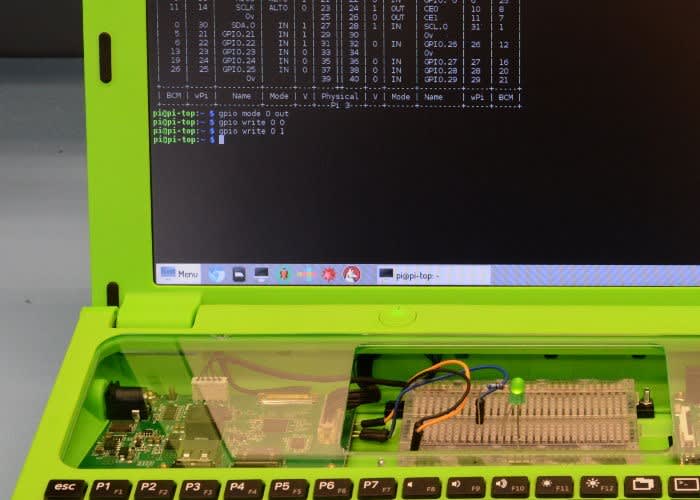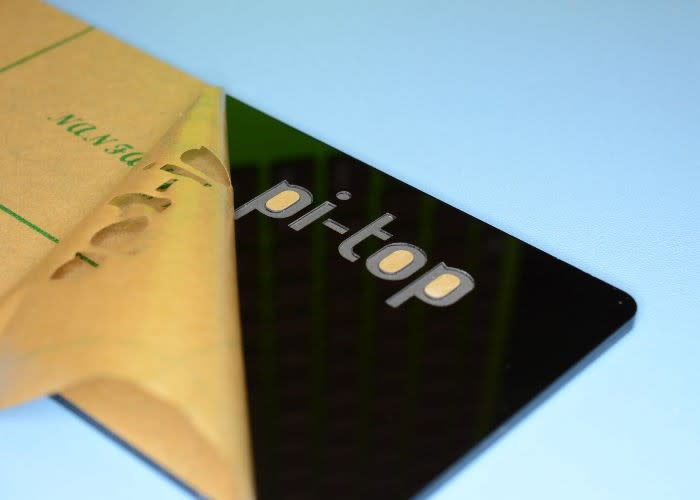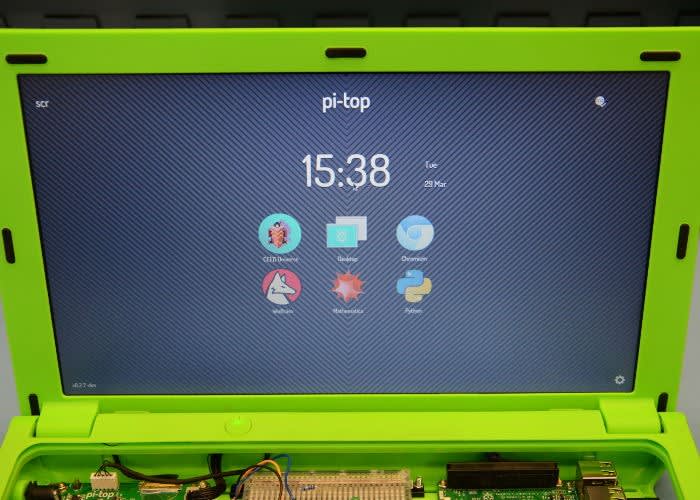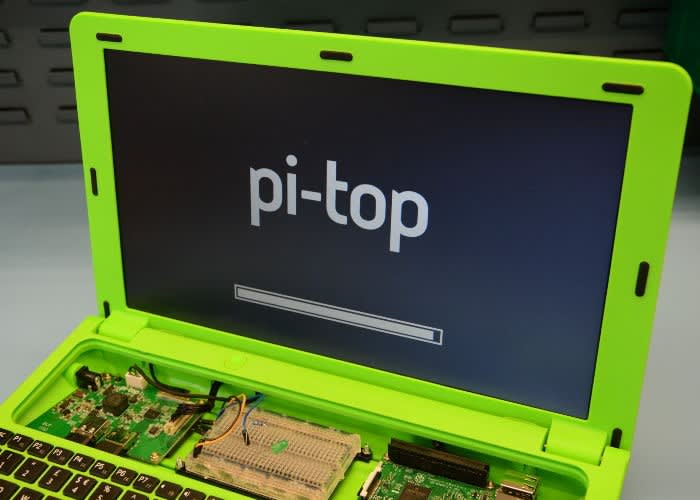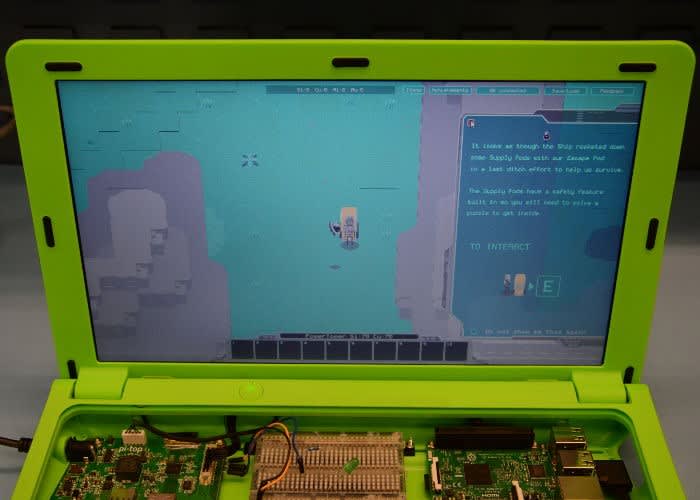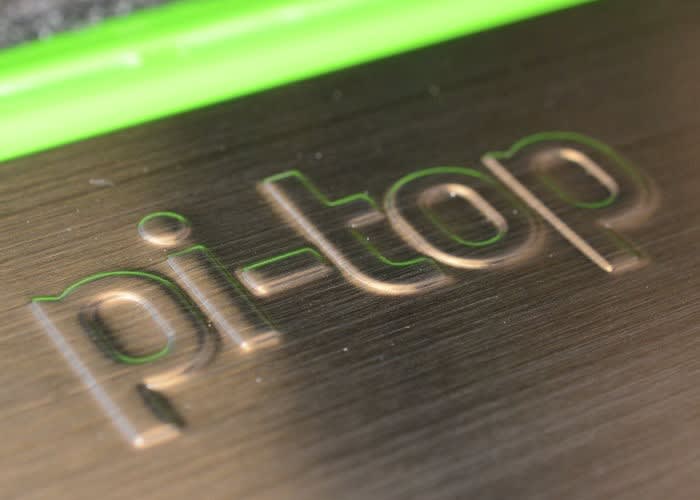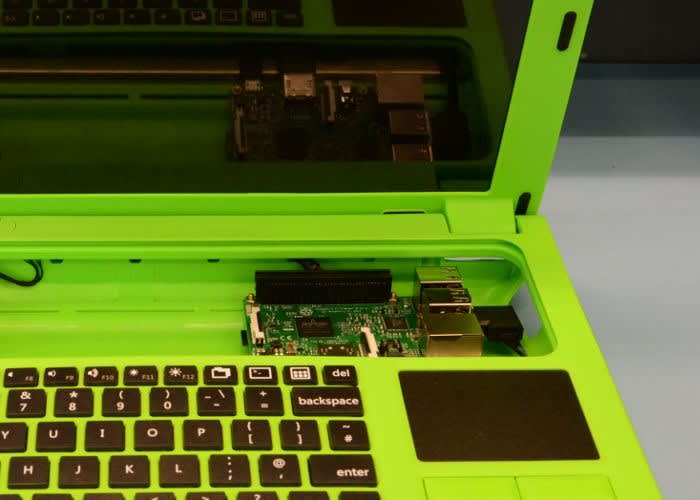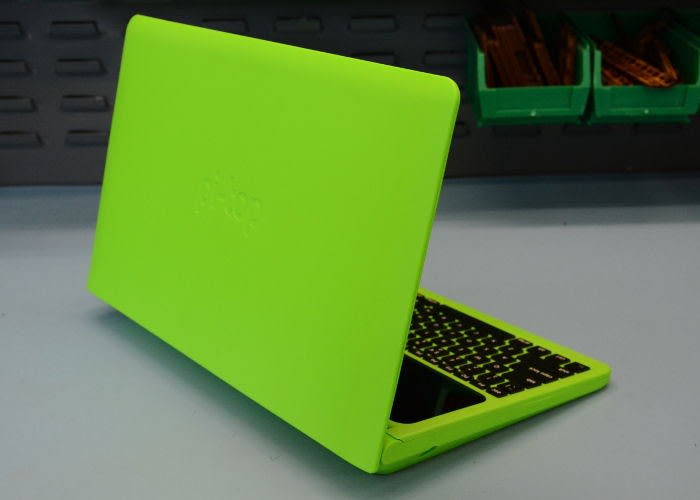The Pi-Top: portable Pi-powered computing
Follow articleHow do you feel about this article? Help us to provide better content for you.
Thank you! Your feedback has been received.
There was a problem submitting your feedback, please try again later.
What do you think of this article?
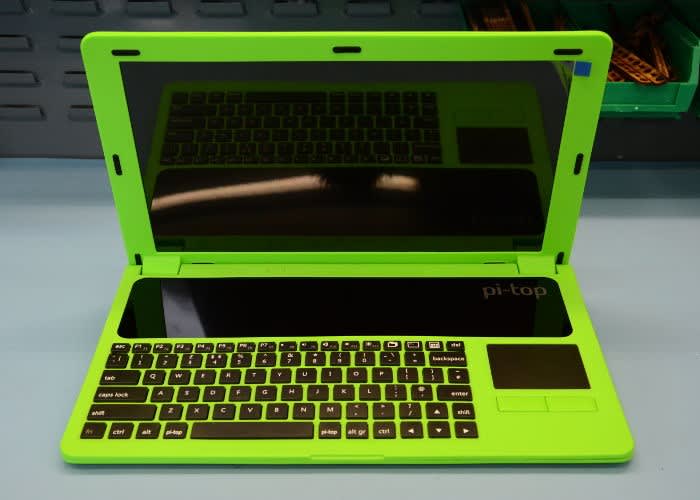
The Raspberry Pi continues to go from strength to strength, with the recent launch of the Pi 3 and news that it is now the best-selling British computer of all time. Though proving popular with many people, it was originally aimed at the education sector, with an updated curriculum demanding improvements in the teaching of ICT and computer science.
Requiring a multitiude of cables and other hardware such as monitors, keyboards and mice, it was soon realised that filling a classroom with the single board computer was a touch more involved than first expected! Enter the Pi-Top, a compact, all-in-one solution with laptop form factor and a Pi inside.
Popular with the crowd
Initially launched on crowd-funding platform, Indiegogo, towards the end of 2014, the Pi-Top proved popular, quickly exceeding target funding. It evolved from a cardboard prototype to a 3D printed frame and now features a neat injection-moulded case with a bright, 13.3 inch screen.
Upon arrival, the Pi-Top caused quite a stir in the office. Not only is it very green (though it is also available in a more subtle grey), it comes in a box that screams 'open me right now'. Grabbing the camera, we did just that.
Assembly time
The Pi-Top is supplied as a kit and although it requires no soldering, it is advised that it will take a beginner 'an evening' to build. There are some slightly fiddly steps to assembly, but that all contributes to the satisfaction of completing the build. I wouldn't want to be conducting a classroom of pupils assembling a host of Pi-Tops, but I can certainly see the potential of a small class group or home build with several children assisted by an adult.
Indeed, there is real value of doing this with anybody who will be using the Pi-Top, or who has never opened up a piece of consumer electronics out of curiosity. Knowing what's inside, and seeing how something is put together is empowering – it takes away the mystery of the 'black box'.
At time of writing there are no files available for 3D printing your own enclosure, but despite taking a step away from a 'print-it-yourself' solution, it is great that the Pi-Top still requires assembly, retaining a sense of DIY and the satisfaction of building a computer.
One of my favourite features is the compartment that houses the Pi-Top 'hub' board and Raspberry Pi. First of all, there is plenty of room for more stuff, be it an extra board or module, possibly a hard drive or other hardware you may wish to connect to your Pi. Convenient mounting rails provide a method for securely fastening these extras and flexibility of where they are positioned.
GPIO on the go
Space for hardware prototyping was the first thing that sprang to my mind and a simple mounting plate was laser cut to hold a 400 point breadboard. The Pi-Top kit includes a wiring harness that occupies the entirety of the GPIO header on the Pi, using some of the pins for functionality like the power button and monitoring of battery status. It also breaks out connections not used to a header on the hub, not hugely convenient for those used to simply attaching jumper wires to the Pi's GPIO header, but by no means a deal breaker.
An add-on board to help interface with the header is reportedly in the pipeline, but in the meantime I wanted to get access to the GPIO. Details of the pinout for the header on the hub can be found on the Pi-Top website, though for simple reference I listed them in a small file here (this repository also includes laser design files used below).
Armed with this pinout information, interfacing with the GPIO was a simple matter of using jumper wires to connect the hub to the breadboard.
Provided with the Pi-Top is an acrylic panel that is slotted in from one side to cover the above-mentioned compartment. This can easily be inserted and removed, and if you have access to a laser cutter, redesigned and replaced with different colours or designs.
I decided to make a panel with an opening for improved access to the breadboard, but I can imagine different coloured panels with logos or custom designs being popular modifications too.
Pi-Top OS
The Pi-Top comes with a pre-installed SD card much like the NOOBS cards supplied in some Raspberry Pi bundles. It is designed to simplify the user experience and has nice touches such as loading screens and so forth. It can simply be inserted into a Pi 2 and booted.
However, at time of writing the card did not work out of the box with a Raspberry Pi 3, and required the use of a Pi 2 to install updates before it played nicely with the Pi 3. I expect this will soon be fixed with an upgrade to the images on the supplied SD cards.
Once installed, the Pi-Top OS provides quick access to software likely to be used in the classroom, including Scratch, Python and Wolfram. Exclusive to the Pi-Top is the CEED Universe, the Pi-Top team's 'gamified method of teaching' that is reported to meet the needs of the GCSE curriculum within the UK.
At present the software offerings from the Pi-Top team feel a touch unpolished (the CEED Universe is currently a demo) but do show promise. After all, a user-friendly, easy-to-install Pi operating system and user experience are exactly what many teachers and end users have been looking for, especially as a tool to deliver ICT and computer science lessons.
Pi-Top users are encouraged to sign up for an account which promises the ability to assess and log individual student learning, alongside other benefits, though again this feels somewhat unfinished and I was unable to find resources as expected.
Closing thoughts
The Pi-Top is a laptop, but not as you know it – it is possibly the easiest way to use the Raspberry Pi without being tethered to a desk or mains power supply – and once built looks to be a great solution for teaching with Pi in the classroom.
The best thing about the Pi-Top? Perhaps the fact that you can upgrade it by simply swapping out the Pi. This is clearly demonstrated with the recent release of the Pi 3, with 5 minutes and a single board change resulting in a big boost in performance over the Pi 2.
The Pi-Top is good now and as the supporting resources are improved I'm sure will be great. The forums and user community are relatively new and as time progresses should provide space for feedback from those using the Pi-Top in the classroom, at home and beyond.
Personally, as somebody familiar with the Raspberry Pi I am interested in the flexibility the Pi-Top gives me as a portable Pi platform. A laptop with space for a breadboard, additional custom hardware and plenty of battery life is certainly exciting!


